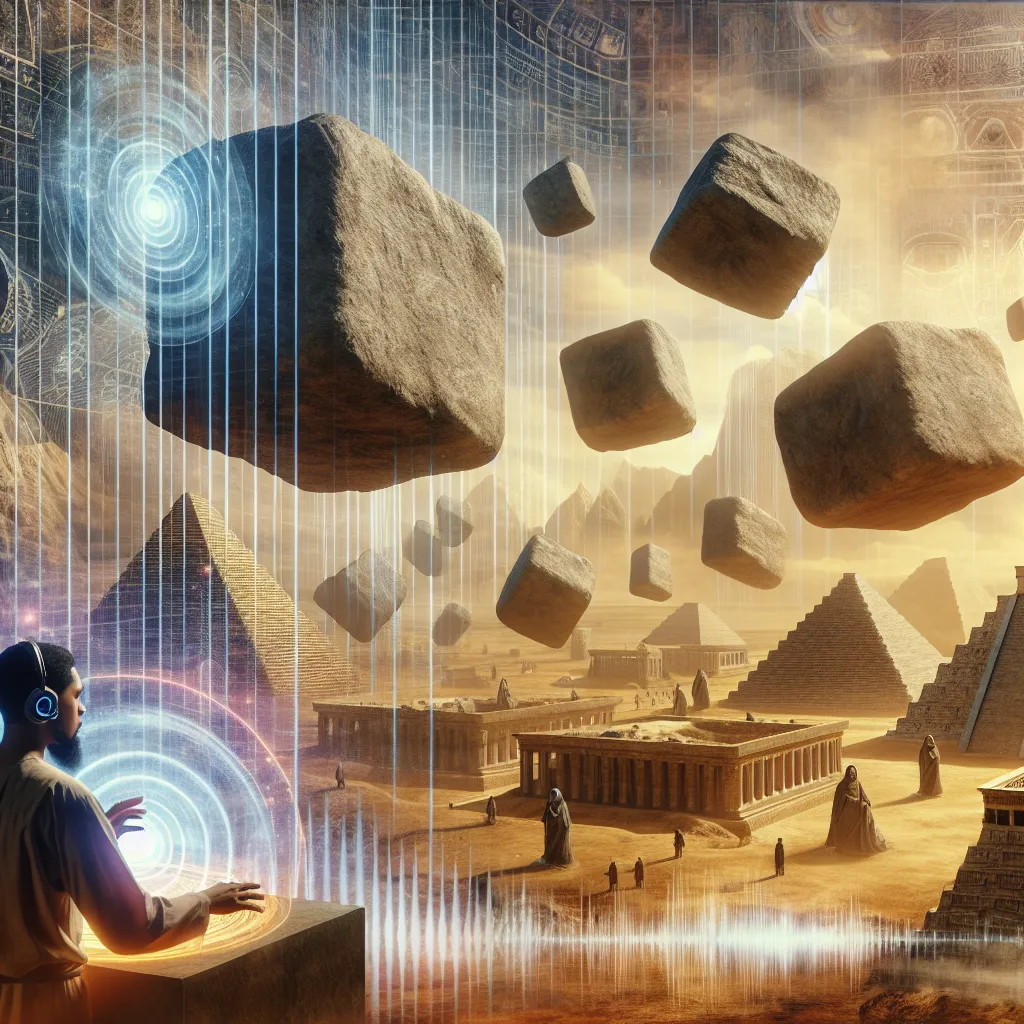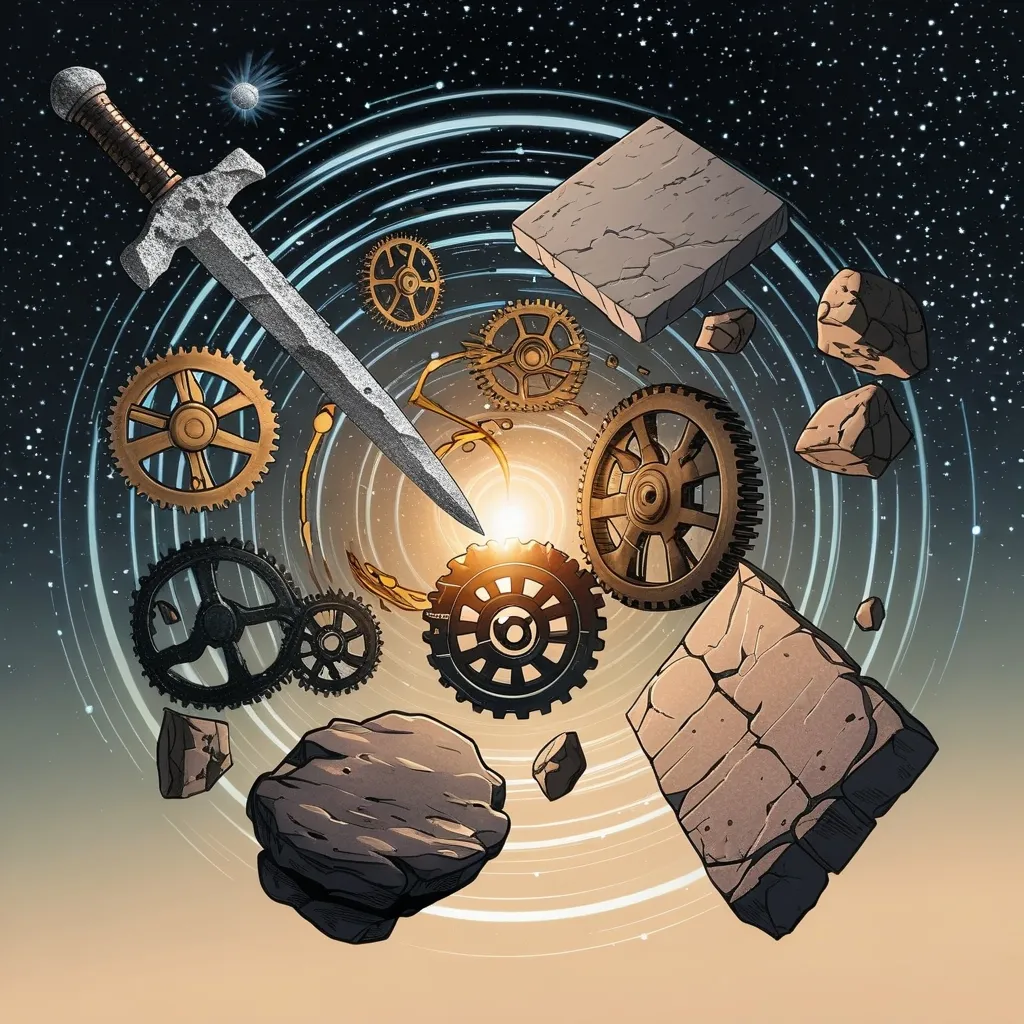Ancient civilizations had some knowledge that’s long been lost to us. But let’s be real, some of that knowledge might not be useful today. Like, if an old swami cured infections with pine nuts and prayer, why bother when we have antibiotics? Now, if someone figured out how to stop Windows updates during Zoom calls, that’d be gold. But shamans are probably Mac users anyway.
Let’s talk about something that could be super practical today: levitation. Imagine being able to lift and move massive, heavy items with sound. Some folks think that’s how the Egyptians built the pyramids.
Considering the ruins of ancient civilizations like the pyramids of Giza or Stonehenge, you might wonder why they’d use such enormous stones. They could’ve gone with smaller bricks, but no, they went for the big boys. We usually look at this with our modern eyes, equipped with today’s technology. We know sound can levitate objects, but our current acoustic tech can only handle tiny, lightweight things. MIT isn’t building pyramids with sound yet.
Some researchers believe ancient cultures might’ve mastered sound-based levitation, letting them move huge stones easily. The great pyramids have been debated for ages—how were they built? Aliens? Nah, the mainstream theory suggests 5,000 men over 20 years with ropes, pulleys, ramps, and cranes. But I have my doubts.
10th-century historian Abdul Hassan Al-Masudi offered a wild theory. He claimed the Egyptians used magic papyrus, metal rods, and stones to slowly levitate blocks for transport. It sounds like a mix of myths and oral history, but it’s a fascinating concept.
The great pyramid has some crazy acoustic properties, suggesting the Egyptians had deep knowledge of sound science. Did they use sonic vibration for levitation? Maybe. The science for this might’ve seemed like magic then and even now.
But let’s not stop at Egypt. Around the world, ancient structures with enormous stone components exist, and their creation is a mystery. For example, the Temple of Jupiter in Lebanon has stones so massive that no modern equipment can lift them. In Bolivia, a single stone in the Gate of the Sun is 10 tons and 12,000 feet up a mountain. How did they manage that?
Then there’s Nan Madol in Micronesia, built on a coral reef with stone logs weighing 50 tons each. The local stories mention giants flying canoes and using magic to levitate the logs. Again, the theme of levitation by sound pops up.
Travelers from the Far East have talked about acoustic levitation for centuries. A notable tale from 1939 involves a doctor witnessing Tibetan monks using drums and chants to levitate a stone. They placed instruments in a specific arrangement and increased their tempo until the stone started rising. Unfortunately, any film evidence of this got confiscated.
Moving to modern-day Florida, there’s Coral Castle, built by Edward Leedskalnin. This guy single-handedly moved and sculpted tons of rock, and some believe he used sound waves. He never explained his technique, but there are hints he knew something about sound and magnetism.
It’s mind-blowing to consider that sound, which we think of as intangible, can move objects. Current acoustic levitation uses sound waves through air or water to counteract gravity. The science is sound, and ancient stories of using sound for levitation have a technical basis.
Whether the pyramids were built with ramps and pulleys or sound waves, it’s clear ancient builders had extraordinary techniques. People are often labeled as kooks for suggesting unconventional theories. History shows that many pioneers, from Copernicus to Tesla, faced ridicule for their groundbreaking ideas.
In our modern era, the media often dismisses new concepts until proven. Remember how they doubted the possibility of flight or the appeal of smartphones? Yet innovators like Steve Jobs and Elon Musk went ahead and changed the world, ignoring skeptics.
So to the tinkerers, dreamers, and out-of-the-box thinkers: keep going. The world needs your daring ideas and innovations. And who knows, maybe the next big breakthrough will come from someone just like you, challenging the established norms and exploring the impossible.






